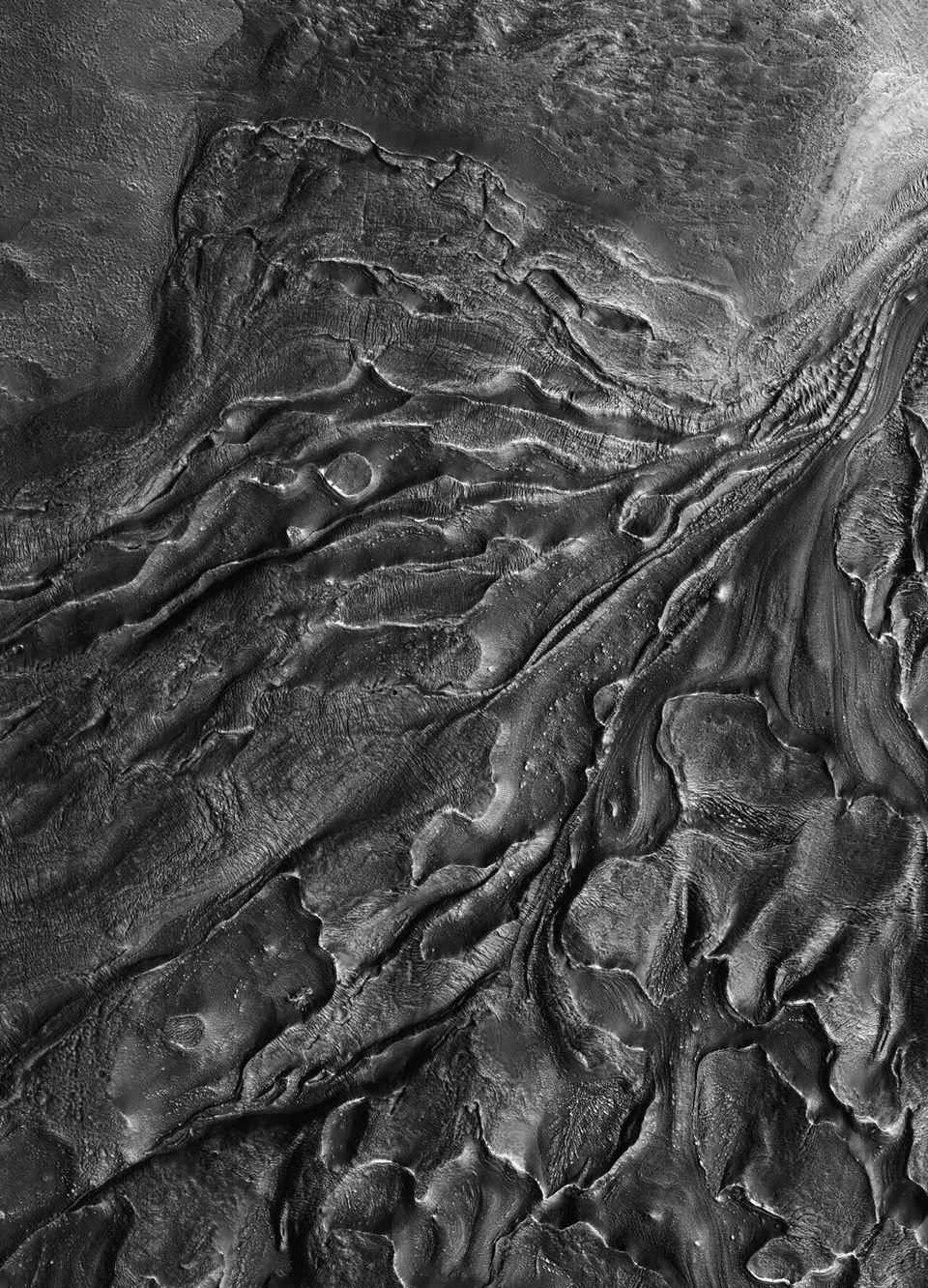
The immediate success of Alfonso Cuaron's "Gravity" proves our ongoing captivation with the visualization of nearby worlds, and of our world from a different vantage point. Images of outer space can be breathtaking, and the mystery of unknown worlds can be awe-inspiring.
A new book from Aperture, "This is Mars," puts a spin on space photography. These are no "Blue Marble" shots. Instead, they're abstract patterns formed by fault lines and rock formations.
Advertisement
Take a look at these 7 fascinating images of Mars:
Captions written by Nicolas Mangold; Images courtesy of NASA, JPL, and The University of Arizona

© NASA/JPL/University of Arizona
Audaciously called Inca City because of its rectangular, geometric shapes evoking vestiges of habitats, these terrains have nothing reminiscent of a city or of the Inca. Their size—several kilometers—is the best proof of that. The nature of this polygonal network, unique on Mars, remains poorly understood, but seems to be linked to volcanic dykes covered by eolian sand. These terrains are close to the South pole and undergo springtime defrosting in dark patches that become progressively larger as temperatures climb.

© NASA/JPL/University of Arizona
The sedimentary strata are mostly composed here of ice from water and not carbonic ice. The fractures that traverse these strata come from strong, seasonal thermal variations that can reach close to 100° C (212° F).

© NASA/JPL/University of Arizona
The zones at lower latitudes (between 40° and 60°) contain very large proportions of ice, notably in the form of glaciers. In the present case, the glacier flows toward the lower-left part of the image—as the nearly parallel lines, all running in the same direction, indicate. A detailed viewing allows even smaller lines perpendicular to this direction to be perceived. These are fractures or crevasses similar to the crevasses that are formed on the glaciers of the Alps, notably when the glacier rolls down the sides of the reliefs.
Advertisement

© NASA/JPL/University of Arizona
The dark traces that converge come from a multitude of fractures are linked to the sublmation of a layer of carbonic ice. This forms geysers because the evaporation of ice proceeds more rapidly beneath the thin layer of ice.

© NASA/JPL/University of Arizona
Hundreds of black-sand dunes of basaltic composition have accumulated on the floor of the Proctor crater. In winter, because ofthe relatively high latitude (47° south), these dunes are covered by frost and carbonic ice, in particular on the polar flanks deprived of sunlight, thus creating a sharp contrast in tone.

© NASA/JPL/University of Arizona
A labyrinth of canyons hollowed out by outflows on a volcanic plateau near the Elysium Mons volcano. During a volcanic action that traverses a region containing ice, albeit subterraneously, a chain of processes is set off from explosions called phréatogmatiques or lahars, those muddy or doughy outpours that, on Earth, flow down snow-covered volcanoes. The nature of these outflows, at the same time muddy, rocky, and fluid, is not precisely known, but these have probably been brief and are not directly connected to climatic conditions. The volcanismon Marsis a source of heat that can explain the local presence of liquid water in a climate that remains very cold.
Advertisement

© NASA/JPL/University of Arizona
The terrains of carbonic ice of the southern vault have been eroded, leaving circular depression, by sublimation—except when the terrains are heterogeneous and inclined, in which case arabesques of small cliffs are formed. The orientation of the terrains, had they been moderately inclined in relation to the pale Sun, low on the horizon at the poles, isin fact fundamental to this process.